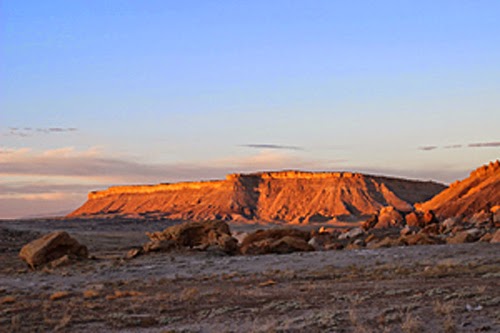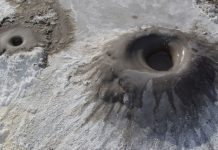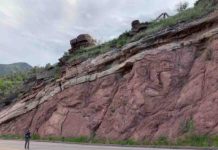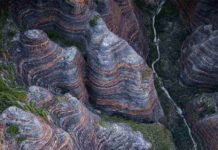
A blend of photos and technology takes a new twist on studying cliff landscapes and how they were formed. Dylan Ward, a University of Cincinnati assistant professor of geology, will present a case study on this unique technology application at The Geological Society of America’s Annual Meeting & Exposition. The meeting takes place Oct. 19-22, in Vancouver.
Ward is using a method called Structure-From-Motion Photogrammetry – computational photo image processing techniques – to study the formation of cliff landscapes in Colorado and Utah and to understand how the layered rock formations in the cliffs are affected by erosion.
To get an idea of these cliff formations, think of one of the nation’s most spectacular tourist attractions, the Grand Canyon.
“The Colorado plateau, for example, has areas with a very simple, sandstone-over-shale layered stratigraphy. We’re examining how the debris and sediment off that sandstone ends up down in the stream channels on the shale, and affects the erosion by those streams,” explains Ward. “The river cuts down through the rock, creating the cliffs. The cliffs walk back by erosion, so there’s this spectacular staircase of stratigraphy that owes its existence and form to that general process.”
Ward’s research takes a new approach to documenting the topography in very high resolution, using a new method of photogrammetry – measurement in 3-D, based on Dylan Ward, a UC assistant professor of geology, is studying the formation of cliff landscapes such as this in Colorado and Utah.
stereo photographs. “First, we use a digital camera to take photos of the landscape from different angles. Then, we use a sophisticated imaging processing program than can take that set of photos and find the common points between the photographs. From there, we can build a 3-D computer model of that landscape. Months of fieldwork, in comparison, would only produce a fraction of the data that we produce in the computer model,” says Ward.
Ward says that ultimately, examining this piece of the puzzle will give researchers an idea as to how the broader U.S. landscape was formed.
Note : The above story is based on materials provided by University of Cincinnati










